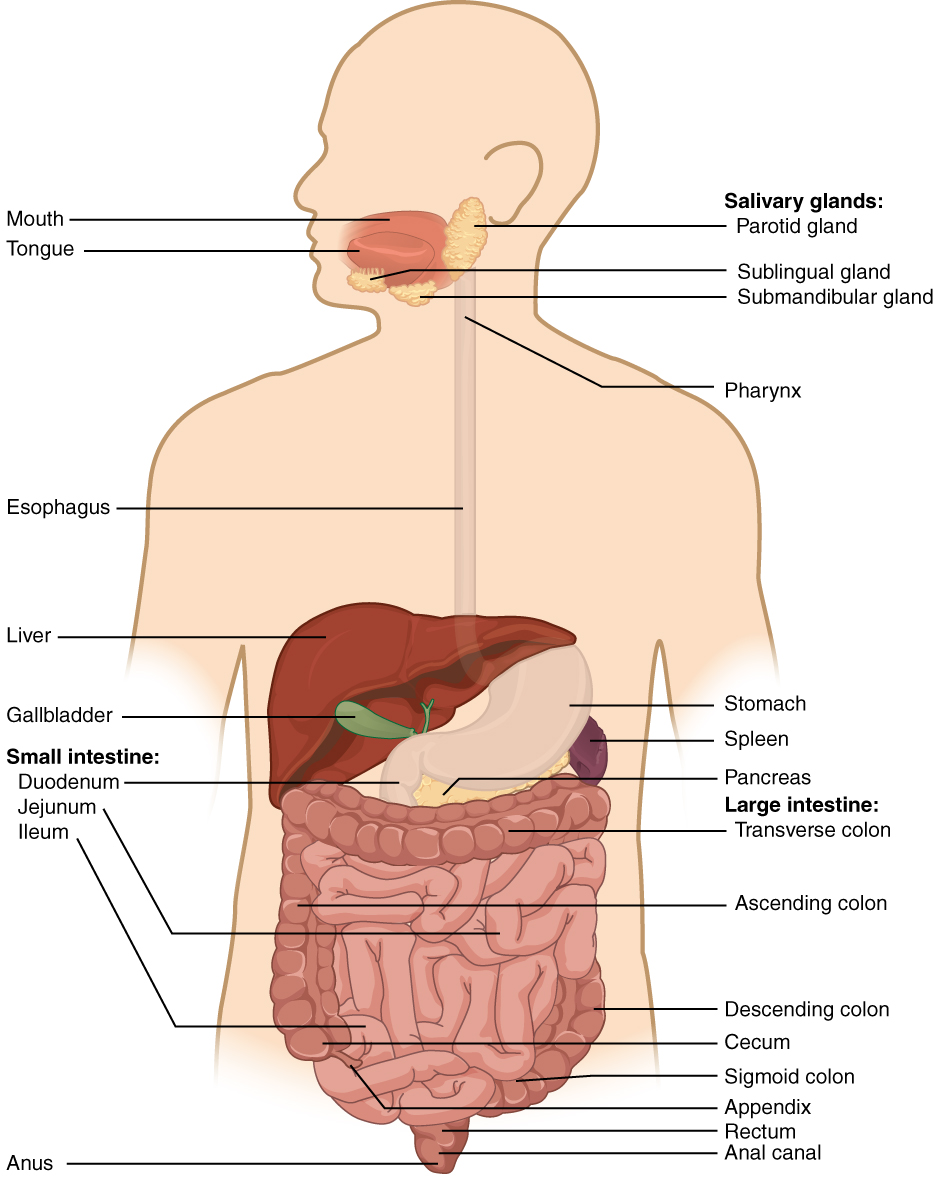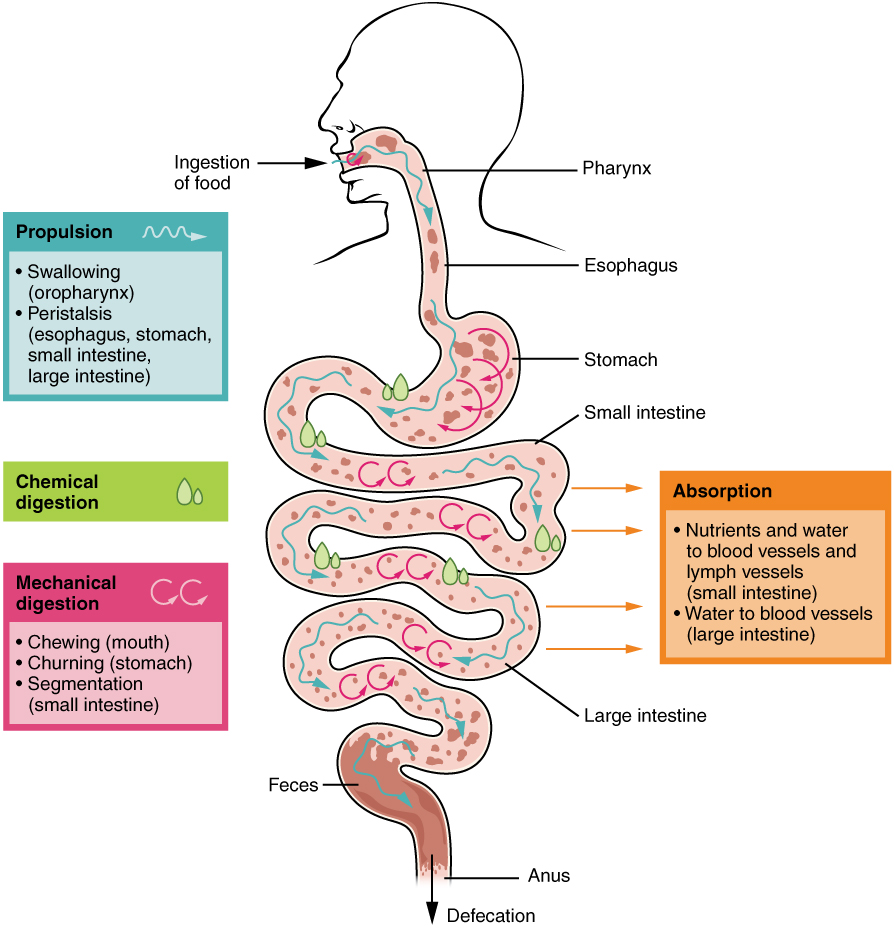Functions of the Digestive System
Objective 1
Describe the overall functions of the digestive system.

The digestive system is the body’s mechanism for processing and absorbing nutrients, biochemical substances that are necessary for life.
All the living cells of the body have mitochondria, and mitochondria run on oxygen, water and glucose. Getting oxygen to cells is the responsibility of the respiratory system (absorption) and the cardiovascular system (distribution). Similarly, for food and water, the digestive system is responsible for absorption while the cardiovascular system distributes nutrients and water to the individual cells of the body. The anatomical structures that carry out this function are called the gastrointestinal tract, or “GI tract.” The word is a mixture of Greek (γαστηρ, gaster, “stomach”) and Latin (intestinus, “inward”). Another name for the GI tract is the alimentary canal (Latin alimentum, “food”).

Media Attributions
- U18-001 Digestive System © Betts, J. Gordon; Young, Kelly A.; Wise, James A.; Johnson, Eddie; Poe, Brandon; Kruse, Dean H. Korol, Oksana; Johnson, Jody E.; Womble, Mark & DeSaix, Peter is licensed under a CC BY (Attribution) license
- U18-002 Digestive Processes © Betts, J. Gordon; Young, Kelly A.; Wise, James A.; Johnson, Eddie; Poe, Brandon; Kruse, Dean H. Korol, Oksana; Johnson, Jody E.; Womble, Mark & DeSaix, Peter is licensed under a CC BY (Attribution) license

